








The Future of Recruitment Technologies 2023 Page 21 - 47 Sponsored by: DECEMBER 2022 • Vol.10 • No.12 (ISSN 2564-1964) Themed Edition on Future of Talent Technology The FuTure oF recruiTing Technology looks BrighT (JusT Don’T squinT)
President, Talent Board
- Kevin W. Grossman,

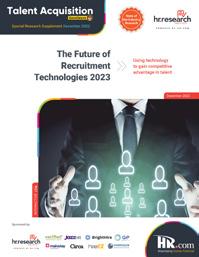
The Future of recruiting Technology looks Bright (Just Don’t squint) Driving stronger candidate engagement and communications -
Talent Board 07 On the Cover Talent Acquisition Excellence DECEMBER 2022 Vol.10 No.12 Articles The Future of recruitment Technologies 2023 Page 21 - 47 19 3 Ways HR Can Win Over Talent Without Spending A Dime The biggest pain points job seekers face during the job search process - Paul Lewis, Chief Customer Officer, Adzuna 53 Got Talent? How 3 High Performing Recruiters Found A Second Career In TA 3 talent acquisition leaders, who came from other fields, share how they became recruiters - Part II - Jennifer
Newton, President, Bluehouse Consulting Group, Inc. 60 5 Ways Leaders Can Attract And Retain Employees In 2023 Creating an attractive culture for existing and new employees - Alina Vandenberghe, Co-CEO/ Co-Founder, Chili Piper (ISSN 2564-1964) in D e X 10 Mapping The Future Of Talent Technology Technology
HR’s job
-
CTO, Criteria 15
Business
Themed Edition
Future
Talent Technology
Kevin W. Grossman, President,
Allen
is today integral to
than ever
Chris Daden,
The Great Hoard: Why Stashing Talent Is Such Bad
Navigating the current labor marker takes a nuanced approach that differs by company - Bill Armstrong, President, Recruiting, Safeguard Global
on
of
How Recruiting Technology Can Help During Recession

Retaining employees and attracting top talent - Mike Tannian, Director, NEOGOV

Why The Future of Recruiting Tech Will Be Inclusive

Learn why it’s important to choose the right digital recruitment solution - Robyn J. Grable, Founder and CEO, Talents ASCEND

Inside
Automation is driving the future of talent recruitment through ML and AI - Alex Fourlis, President, Broadbean
Hari Kolam, Co-Founder and CEO, Findem
Top Picks 12
49 58
17
The Automated Future Of Recruiting Technology
HR Technology Predictions: A Tricky Year For
INDEX
2023
Soothsaying 3 trends that will shape the future of HR tech -
Editorial Purpose
Our mission is to promote personal and professional development based on constructive values, sound ethics, and timeless principles.
Excellence Publications
Debbie McGrath CEO, HR.com - Publisher
Sales
and Research)
Talent Acquisition Excellence Team
Submissions & Correspondence
Please send any correspondence, articles, letters to the editor, and requests to reprint, republish, or excerpt articles to ePubEditors@hr.com
For customer service, or information on products and services, call 1-877-472-6648
For Advertising Opportunities, email: sales@hr.com
Talent Acquisition Excellence (ISSN 2564-1964)
is published monthly by HR.com Limited, 56 Malone Road, Jacksons Point, Ontario L0E 1L0 Internet Address: www.hr.com
Matt charney
 Editor-in-Chief,
Editor-in-Chief,
Talent Acquisition Excellence
Dear readers of Talent Acquisition excellence,
I’d start off by saying something specious like “it’s the most wonderful time of the year,” but you’ve heard enough of that stuff by now - and ‘tis never the season for hackneyed content marketing cliches.
The fact of the matter is, however, that we’ve already put another year in the rearview mirror, and 2022 is already behind us like a mirage. I recently realized that my two-decade anniversary of being in this business is coming up fast (as years do), and when your beat is HR and recruiting technology, it’s really just the same stuff, different year after year.
Since I took my first recruiting job fresh out of college, smartphones and social media were invented. Although I had Facebook during my junior and senior years, I didn’t know what that closed network of students from private, and essentially elitist, Universities would become.
There was a single group that let the limited user base lobby “be Mark’s Girlfriend,” (weird), its single biggest utility was that you could automatically connect with classmates by uploading your schedule, and there were no photos or even a timeline, so to speak. Yeah, I’m old.
But the point is, consumer technology has undergone a seismic shift since I started sourcing back during the Bush years; at the time, we didn’t text, but used BBM instead.
We had separate digital cameras that required you to move a memory disc from there to a hard drive to edit a picture, rather than a whole society built on the currency of selfies and self-promotion.
We burned CDs, although you could download music; a single track took a couple of days, sometimes. And recruiters used to actually fax offer letters, background check forms, and other random hiring paperwork - it was the dark ages, really.
Copyright © 2022 HR.com. No part of this publication may be reproduced or transmitted in any form without written permission from the publisher. Quotations must be credited.
Dawn Jeffers VP,
Sue Kelley Director (Product, Marketing,
Babitha Balakrishnan and Deepa Damodaran Excellence Publications Managers and Editors
Matt Charney Editor-in-Chief
Deepa Damodaran Editor
Chinnavel Design and Layout (Digital Magazine)
Chandra Shekar A K Magazine (Online Version)
eDiTor’s noTe
But in the intervening years, the more things change, as they say, the more they stay the same in talent acquisition technology. If you need any proof, just check out the table of contents for the fine publication you’re reading.
From “AI-powered resume screeners” (which 20 years ago was simply called “stack ranking”) or “VR-enabled job interviews” (which used to just be GoToMeeting), recruiting technology and associated “thought leadership” hasn’t evolved much - as any one, candidate or TA professional, hiring manager or people leader - would probably tell you (if they were being honest, that is).
Look. Talent acquisition technology has become an entrenched part of what we think of recruiting these days. And as exciting as the future might be, and how full of possibilities recruiting technology might be in years to come, right now, you might be right to think it’s beginning to look a lot like Christmas (er, the holidaysc’mon, we all know what that means).
Your TA Tech stack under the tree is full of shiny new toys you just can’t wait to play with (“the box sounds like a resume redactor!”) - even if you don’t really know what you’re getting, even if you know exactly what you asked for. And while it’s easy to get caught up in the hype of the next “big thing” in recruitment tech, it’s important to remember the thing that’s so much more important, and infinitely more variable, than talent technology.
And that’s the talent those technologies touch. We sometimes forget that the entire point of recruiting is to put good people into good jobs and, optimally, improve their relative quality of life while improving your business or bottom line. And when you do it right, there’s no better feeling in the world.
That emotional connection - that chemistry, or “fit,” between the right opportunity and the right candidate is foundational to successful talent acquisition, and it’s something that no technology will ever replace.
Trust me. I originally tried to have ChatGPT write this for me.
Turns out all tech has its limitations - and, if you’ve read this far, you already know the same is true for the “talent,” too.
Happy recruiting, Sincerely, Matt Charney
Disclaimer: The views, information, or opinions expressed in the Excellence ePublications are solely those of the authors and do not necessarily represent those of HR.com and its employees. Under no circumstances shall HR.com or its partners or affiliates be responsible or liable for any indirect or incidental damages arising out of these opinions and content. OR
Subscribe now for $99 / year And get this magazine delivered to your inbox every month Become a Member Today to get it FREE! SIGN UP Write to the Editor at ePubEditors@hr.com
How are our Talent Acquisition Products and Services helping to make you smarter?


Talent Acquisition Excellence - Monthly Interactive Learning Journal
This monthly interactive learning experience captures key metrics, actionable items and keeps you focused on developing yourself and corporation as top leaders in the Talent Acquisition space.
Talent Acquisition Virtual Events

Talent Acquisition Virtual Events offer webcasts and demos on topics in any of the staffing related programs: Contract Workforce and Talent Exchanges, Online Staffing and Sourcing, Recruitment Process Outsourcing, or Quality of Hire. Learn how to bring the right staffing and recruiting programs into your organization and make them impactful. Listen to the world’s top thought leaders in the staffing industry as they help companies make decisions in all areas of staffing and recruiting. Each Virtual Event consists of up to 10 credit webcasts.
Talent Acquisition Webcasts for Credit
HR.com webcasts deliver the latest Talent Acquisition industry news, research trends, best practices and case studies directly to your desktop. Webcasts are available live online with a downloadable podcast and a copy of the slides (PDF) available before and after each webcast. Earn all of the required recertification credits for aPHR, PHR, SPHR, GPHR, and SHRM Certifications. HR.com’s one-hour webcasts, in every HR specialty including Talent Acquisition, are pre-approved for HRCI and SHRM credit (excluding Demo webcasts).
Talent Acquisition Community
Join almost 55,000 HR.com members with a similar interest and focus on staffing and recruiting topics with one of the four staffing related online communities: Contract Workforce and Talent Exchanges, Online Staffing and Sourcing, Recruitment Process Outsourcing, or Quality of Hire. Share content and download research reports, blogs, and articles, network, and “follow” peers and have them “follow” you in a social network platform to communicate regularly and stay on top of the latest updates. This well established Community is an invaluable resource for any HR professional or manager.
Use these invaluable Talent Acquisition resources today! For more information phone: 1.877.472.6648 | email: sales@hr.com | www.hr.com
The Future of recruiting Technology looks Bright (Just Don’t squint)
Driving stronger candidate engagement and communications
 By Kevin W. Grossman, Talent Board
By Kevin W. Grossman, Talent Board
There are lots of promising trends in the future of recruiting technology. Super sophisticated AIand machine learning-powered tools, for instance. Blockchain technology for verifying applicant data. Even the use of virtual reality to help candidates
“experience” a job before applying for it. Very exciting stuff, for sure.
Before deeply investing in these cutting-edge tools of the future, however, we really ought to fix the recruiting
Talent Acquisition Excellence presented by HR.com December 2022 7 Submit Your Articles
coVer ArTicle
technologies we already have, many of which have fallen short of their potential or failed to live up to their promises.
This was a key takeaway of a recent Talent Board survey of about 250 recruiting and HR professionals, conducted in partnership with JobSync earlier in 2022.
This joint research revealed that, despite the widespread and growing use of sophisticated recruiting technologies, TA teams continue to invest considerable time and effort in manual tasks and struggle with integration issues. For example:
● An astonishing 63% of the survey’s participants said more than a quarter of their overall recruiting process continues to be based on manual tasks.
● 61% continue to spend 6+ hours a week on manual recruiting-related processes.
● 25% said their ATS doesn’t integrate well into their recruiting tech stack, 16% said the same of their screening and assessment tools, and
15% said called out their CRMs, background screening systems, and virtual recruiting event platforms for poor integration.
As these stats show, our current recruiting technologies still require improvement, particularly when it comes to their ability to seamlessly integrate together and eliminate manual tasks. We owe it to TA professionals (and candidates, for that matter) to perfect the tech and tools they are already relying on.
That said, one of the biggest areas of opportunity in the future of recruiting technology is the need to drive stronger candidate engagement and communications.

The Future is now for recruiting Technologies
The reason this is such a golden opportunity? Simple: there are no signs that The Great Reshuffling—people quitting their jobs or actively planning to do so—is going to end anytime soon. Workers in droves are jumping ship for companies that better reflect their own interests, goals, and values. They are seeking out roles that offer greater purpose and meaning.
Talent Acquisition Excellence presented by HR.com December 2022 8 Submit Your Articles
The Future of Recruiting Technology Looks Bright (Just Don’t Squint)
While this has turned talent acquisition into a bit of a free-for-all, it is actually good for employers in the long run. When workers do find the roles and organizations where they truly fit, their performance, motivation, happiness, and retention all soar.
Clearly, then, employers need tools and technologies that help them rise above the competition and chaos of this new talent paradigm. They need the ability to engage job seekers earlier in their searches, communicate swiftly and via the channels they prefer, showcase what makes their companies and workplace cultures unique, and allow interested candidates to apply for jobs more easily.
Tools and tech that nurture these steps toward more effective engagement and communication are going to be embraced by employment brands in every industry and region.
Talent Board’s 2022 benchmark research (which will be published in early 2023) has identified a few noteworthy recruiting tech trends:
● Text-based recruiting systems are on the rise: 66% of the companies delivering North America’s highest-rated candidate experiences used a text-based recruiting system this year. This is a higher percentage than all other companies in our research combined, but the overall number of companies using text-based recruiting systems has increased steadily since 2020.
● Text-based communications convey powerful outcomes: Text-based job alerts and text-to-apply notifications increase candidates’ positive sentiment and their perception of fairness toward employers and the candidate experiences they provide—potent outcomes for any employment brand.
This is partly due to the consistency of text-based communications, which are more reliable than emails that frequently go left unchecked or get weeded out by spam filters. When candidates launched a job application from a text, there was an 86% increase in
their 4-star and 5-star ratings (out of 5) of the employer’s application process.
● Chatbots and AI-based tech differentiate the highest rated candidate experiences: Talent Board has seen a 31% increase in the use of chatbots since 2020 among companies participating in our annual survey, and the companies delivering the highest rated candidate experiences in 2022 are all utilizing more AI-based technologies than all other companies combined.
Chatbots are now being used across virtually all phases of the recruiting process, freeing up recruiting teams to focus on engagement and relationship building with the most promising candidates.
Yes, the future of talent tech looks amazing and I am certain a new era of efficiency and effectiveness is just over the horizon. However, first things first: let us optimize and utilize the technologies we already have while we usher in the new era.
Kevin W. Grossman is the President of Talent Board and the Candidate Experience Awards. Kevin has over 23 years of domain expertise in the human resource and talent acquisition industry and related technology marketplace. He’s been a prolific industry writer since 2004 and his first business book on career management titled Tech Job Hunt Handbook was released in December 2012 from Apress. His second book titled Candidate Experience: How to Improve Talent Acquisition to Drive Business Performance will be released in 2022 by Kogan Page.
Would you like to comment?

Talent Acquisition
December 2022 9 Submit Your Articles
Excellence presented by HR.com
The Future of Recruiting Technology Looks Bright (Just Don’t Squint)
Mapping The Future of Talent Technology

Technology is today integral to hr’s job than ever
By Chris Daden, Criteria
It has never been more critical for HR teams to be adaptable, especially when it comes to how they hire. Over the past several years, a new normal has rapidly emerged for HR professionals, who now must leverage technology in hiring, retaining, and managing talent to remain competitive. In an era of remote work and workforce flexibility, digital resources are essential for building a reliable talent pipeline and keeping employees on board.
Criteria recently published two reports which offer guidance for HR professionals attempting to navigate today’s hiring landscape and maintain a healthy workforce. Our Hiring Benchmark Report surveyed over 500 hiring professionals to identify several of the most significant trends in hiring, while our Candidate Experience Report asked almost 2,000 job seekers about their attitudes toward the hiring process. Both reports offer an in-depth look at candidate expectations and pain points, as well as insight into the state of hiring today.
Several themes emerged in the reports: from the importance of flexibility to the surprising optimism of candidates and hiring professionals. One of the most actionable insights for HR teams is the increasingly central role of technology in meeting candidate and employee demands. Whether it’s providing flexibility through remote work options or offering an efficient and fair hiring experience, technology has never been more integral to an HR professional’s job.
how Technology enables Flexibility
From the demand for remote work to the desire for greater work-life balance, employees have made it clear that flexibility is among their top priorities. While hiring professionals think employees value compensation over all other demands, our research found that they rank work-life balance and opportunities for career advancement above pay. In other words, employees want flexibility in how and where they work, as well as the ability to change roles and advance internally.
However, just 28 percent of companies say they have a defined program in place to encourage talent mobility. One way they can change this status quo is by using objective assessments of employees’ skills to allocate talent. Significant proportions of organizations rely on assessments to distinguish candidates from one another in terms of behavioral traits (80 percent), cognitive aptitude (74 percent), and other characteristics, and the same strategy can be deployed to facilitate talent mobility.
Talent Acquisition Excellence presented by HR.com December 2022 10 Submit Your Articles
Assessments can also be used to increase diversity at different levels of the company, as they give all employees a fair shot at proving their ability to fill a role.
While 54 percent of companies say they have implemented a return-to-office (RTO) plan this year, employees are not going to relinquish their remote privileges anytime soon. A recent McKinsey survey found that 87 percent of the employees who have a chance to work remotely take it.
This is yet another way in which technology has become vital for today’s HR teams.
Technology ensures Fairness in hiring and Promotions

Our research demonstrates that candidates and employees are eager to prove themselves: all they ask for is a level playing field. For example, 94 percent of candidates believe assessments will demonstrate their potential to succeed in a job, while 74 percent say assessments showcase their potential beyond past experience.
Overall, 84 percent of candidates say they are able to demonstrate their full potential to employers, while 71 percent feel the hiring process is fair. These perceptions are good news for HR teams: they show that employees welcome rigorous and predictive hiring methods that will ultimately lead to greater productivity.
Sixty-one percent of hiring professionals told us that increasing diversity is a priority for their organizations, while 76 percent of candidates say a diverse workforce is important in evaluating companies. Meanwhile, onethird of hiring professionals say they find improving diversity and inclusion challenging.
HR teams can use objective assessments to give all candidates a fair chance at landing the jobs they want – a strategy that will simultaneously deploy talent effectively and show employees that the company values fairness and diversity.
While candidates are generally confident in their ability to prove their skills to employers and land the jobs they
want, 28 percent still say they feel disadvantaged by the traditional hiring process and 35 percent feel that their work experience holds them back from finding opportunities. HR teams can address these concerns by adopting data-driven hiring tools like objective assessments.
The Future of Talent Technology
HR professionals confront plenty of serious challenges as we enter 2023 – half of the companies say turnover has been a major problem and the labor market remains extremely tight. As if those issues weren’t enough, companies also face economic challenges including inflation and radically shifting employee demands and expectations.
Our research found that many companies are stuck in a status quo that no longer exists. For example, the majority of HR teams are implementing RTO policies despite most remote or hybrid companies having fewer problems with turnover than their primarily in-person counterparts. Hiring professionals are also wrong about candidates’ priorities, ranking compensation above work-life balance and opportunities for career advancement. While employees welcome talent mobility, just 28 percent of companies have programs in place to encourage it. Technology is crucial for addressing all these issues, from the development of an effective remote work platform to the use of objective talent assessments.
Still, our research revealed several positive trends. Seventy-eight percent of hiring professionals have a positive outlook about their companies’ growth over the next year, and they believe their budgets will increase by an average of 7.4 percent. Ninetyone percent of organizations say they’re using preemployment assessments. These are signs that HR teams are adapting to the new hiring landscape – now they just have to keep up the momentum in 2023.
Would you like to comment?
Talent Acquisition
December 2022 11 Submit Your Articles
Excellence presented by HR.com
Mapping The Future Of Talent Technology
Chris Daden is CTO at Criteria
how recruiting Technology can help During recession
retaining employees and attracting top talent
 By Mike Tannian, NEOGOV
By Mike Tannian, NEOGOV
Over the past several years, HR professionals have been faced with a hiring crisis – the magnitude of which no one could have anticipated. While some may have prepared for the “Silver Tsunami,” no one could have prepared for the increased recruitment challenges that accompanied the pandemic.
The pandemic created a new mentality among job seekers, leading to the Great Resignation (or the Great Reshuffle). It increased expectations of higher pay, flexible work options, and meaningful jobs. Together, these events pushed us into the throes of a mass exodus of workers and a dearth of applicants that
Talent Acquisition Excellence presented by HR.com December 2022 12 Submit Your Articles
Top Pick
created labor shortages and unrelenting competition for qualified candidates.
The million-dollar question then is how do you retain employees and attract top talent? We will explore this question and provide some answers in the rest of this article.
how the hiring crisis Affects everyone
Nearly every industry has been impacted by the hiring crisis. Historically, the public sector has been somewhat insulated from trends in the job market because of their promise of job security, meaningful work, and good benefits. But even they are seeing a staggering number of job openings.
In both the private and public sector, the struggle to fill openings with qualified candidates does not just impact the organization. It affects the quality of your services, the job satisfaction of existing employees, and ultimately, the customers and communities you serve.
A 2022 survey of applicants from 67,000 applications on GovernmentJobs.com found that nearly 20% of state and local government agencies have already reduced services due to staffing shortages, and 40% are expecting to cut services to the public if the hiring crisis continues.
Clearly, something has changed for job seekers, and HR professionals need to adapt.
The pandemic led to a crucial shift in the way employees work and how they view their careers. According to the U.S. Bureau of Labor Statistics, more than 400,000 jobs have been added every month for the past year. This need for qualified employees has put job seekers in the driver’s seat.
Candidates are looking for higher pay, meaningful work, and the same kind of flexible or remote work options they became accustomed to during lockdowns. Studies show that the overwhelming majority of employees would prefer to work remotely
and, when offered, will choose that as an option. And with remote work becoming more common, candidates are open to opportunities across the U.S. and even the world.
This mental shift is real, and it hits home when you look at the numbers. In the public sector, the number of job posts has increased by 45% between 2021 and 2022, but the number of applicants decreased by more than 50%. And over the past six years, applications per job in the public sector have decreased by 74%. Could there be a correlation between these statistics and the public sector being slower to adapt to an evolving job market?
Employee values and expectations are changing, and organizations are working hard to make themselves more competitive. But there’s still more that can be done.
Jobpacalypse, now? how employers can Adapt to a hiring Downturn
As author James Clear wrote in the New York Times bestseller, Atomic Habits, “You do not rise to the level of your goals. You fall to the level of your systems.”
In order to meet the moment and close the ever-widening gap, it is time for employers to catch up in their digitization and modernization efforts.
● How can you get in front of the right candidates?
● How do you make jobs more attractive to applicants?
● How do you modernize the hiring process?
● How do you appeal to the increasingly tech-savvy generation of applicants?
Technology is vital for recruiting the right candidates, especially for organizations in the public sector struggling to fill openings with top talent. Technology must be adopted to cover the growing services gap and continue to best serve customers and citizens alike.
Technology is key
All industries and employer functions have been impacted by technology, and hiring and recruitment
Talent Acquisition
December 2022 13 Submit Your Articles
Excellence presented by HR.com
The cycle goes unbroken: What has changed for Job seekers?
How Recruiting Technology Can Help During Recession
are no exception. Here are three easy ways to use technology to respond to today’s hiring challenges.
1. Rely on Experts: Utilize experts and resources from outside your organization. Consulting and technology firms that specialize in HR tech solutions can significantly streamline processes, help employers reach the best candidates, and improve the recruitment process. Look for talent management solutions and other tools that automate the employee lifecycle and streamline processes from a centralized cloud-based platform. These experts are experienced in providing solutions that set employers apart from their competitors.
2. Use Existing Digital Tools: Social media and digital tools are ubiquitous in everyday life and should be used for recruitment purposes as well. Social media is an excellent way to promote job opportunities and showcase organizational culture. Digital advertising campaigns can target potential candidates by experience level, geographical location, and more.
3. Speed Up the Hiring Process: Attracting and onboarding the best candidates is difficult without a short and efficient hiring process, and technology is a crucial piece of the puzzle. Conducting interviews virtually through Zoom (or a similar platform) brings convenience and speed to the hiring process and caters to remote or hybrid work schedules. Additionally, key metrics like time-to-hire and time-to-productivity can be improved with applicant tracking systems (ATS), candidate relationship managers (CRMs), and onboarding tools that make the recruitment process faster and easier.
importance of Adaptability
Employers and HR professionals should be flexible and open to the changing needs of candidates today. Traditionally, employers in the public sector have been slower to adapt to changes in the job market, but they are starting to make positive changes to attract more qualified candidates and fill jobs faster.
For example, out of 241 respondents to the Governmentjobs.com survey, 69% of organizations
are changing job conditions to fill job postings, 41% are reducing the minimum qualifications for their jobs in order to attract more candidates, and 30% have expanded their remote work options.
Is your department and organization ready to adopt new systems and processes to adapt to an evolving job market? If not, why, and what small steps can you take in the meantime?
real lives, real impact: how the hiring crunch hits home
Embracing new technologies in HR and recruiting can mitigate the impact of the hiring crisis on your organization. But it’s important to understand that outdated hiring practices and staff shortages don’t just impact you as an employer.
61% of public sector HR directors reported law enforcement as having the most difficulty with recruitment, thereby impacting the agency, officers, and community. Law enforcement officers are working longer hours and more overtime, which can quickly lead to burnout. Additionally, unfilled job openings lead to reduced community services. If this trend continues over the next quarter, more than 40% of public sector agencies expect to cut services to the public. Similar impacts are seen throughout most industries.
Fortunately, there is positive change ahead. As these challenges become today’s new normal, implementing new technology and adapting to the evolving labor market will help you recruit and retain the most competent workforce possible.
Tannian is Director at NEOGOV
Would you like to comment?

Talent Acquisition Excellence presented by HR.com December 2022 14 Submit Your Articles
How Recruiting Technology Can Help During Recession
Mike
The great hoard: Why stashing Talent is such Bad Business
By Bill Armstrong, Safeguard Global
Labor costs are the top expense on most balance sheets, so when the economy is uncertain, business leaders have historically laid off employees to cut costs. However, that pattern is not true today.
As inflation rises and talk of recession increases, unemployment is surprisingly remaining low. We are seeing that organizations are holding onto employees in a phenomenon economists have dubbed “labor hoarding.”
Labor hoarding is the practice of making all efforts to avoid layoffs to not have the future expenses associated with hiring and training. It is a reaction to the labor shortage, but it is more than that. Labor hoarding is a unique response to the pandemic’s effect on the labor market, including the Great Resignation.
Employees removed themselves from the workforce, creating labor shortages that hurt business. With talent attraction and retention challenges during the Great Resignation still top of mind for companies, leaders are now keeping talent on board as business slows to avoid repeating that scenario.
The labor shortage affected everyone. Even if you are employed in a resilient sector, you likely experienced
the labor shortage as a consumer, maybe through limited menus or shorter hours when your favorite restaurant could not replace staff, or perhaps through understocked shelves and overworked employees at grocery stores and other retail outlets.
The situation made everyone cautious about losing talent. Holding onto employees can be a positive development, if it leads to a workplace culture that truly values human capital and offers flexibility to keep them on board.
However, it can have a negative effect if employers tolerate underperformance, lowering workplace standards and alienating star performers. Navigating the current labor marker takes a nuanced approach that differs by company.
labor hoarding: The Dark side of the Job Market
First, let us talk about the downside of labor hoarding, which can include both macroeconomic effects and negative repercussions for individual businesses. The big-picture view is that labor hoarding can slow job growth numbers and keep the unemployment rate lower than it would typically be in a recessionary environment.
Talent Acquisition Excellence presented by HR.com December 2022 15 Submit Your Articles
navigating the current labor marker takes a nuanced approach that differs by company
While low unemployment is usually positive, we are seeing the Federal Reserve increase interest rates to fight inflation. Inflation will continue as unemployment numbers stay low and consumers continue to spend. In other words, low unemployment could make it harder for ailing economies to dig out of the hole they are already in, and that can extend economic uncertainty.
Labor hoarding can also cause issues at individual companies. Some businesses are retaining underperformers because they are worried that if they fire a worker for cause, they will not be able to replace them or might get into a bidding war on pay with a new employee. This practice can result in productivity and customer care issues, and it can also backfire and cause top performers to leave as they burnout.
For example, say John is an employee who is unproductive on the job and chronically absent, but his employer keeps him on board anyway due to fear of not being able to replace him at the same pay level. John’s coworker Suzy, a top performer, is then left to pick up the slack. Suzy feels underappreciated due to overwork, gets burned out and leaves for another job.
As this example illustrates, it is a bad idea to keep underperforming people on the payroll, even in a tight labor market. It can drive good people away and have a negative effect on customers and the company’s culture. The good news is, aside from avoiding that trap, there are other actions HR teams can take that can turn the current labor shortage into an advantage.
Potential upsides to the labor shortage
One positive effect of the recent labor market turmoil of the last few years is it drove home a point HR professionals have been making for years: people really are a company’s most valuable asset. So, there is a real opportunity to build a more positive, productive company culture and offer employees more flexibility and transparency, allowing them to work in any way that suits them and the company.
The work-from-home experience during the pandemic increased employee demand for greater flexibility, and companies that accommodate them will be in a better position to attract and retain great employees. Remote work can also expand the labor pool when employers consider overseas workers.
In cases where there is a legitimate need for in-office hours, employers who make the business case for why onsite work is needed, e.g., for collaboration time, typically find that employees are supportive. What they object to is when employers demand that they be in the office when there is no added benefit. Being transparent with the rationale behind decision-making builds trust.
Labor hoarding, the Great Resignation, quiet quitting, quiet firing — the pandemic spawned a multitude of workplace aftereffects, all of which are solvable with a look into company culture and values. HR leaders should focus on providing an excellent workplace that encourages flexibility, trust, productivity and rewards top performers.

For labor hoarding to be a successful company tactic, it must focus on the retention of star employees and culture building.

Would you like to comment?
Talent Acquisition Excellence presented by HR.com December 2022 16 Submit Your Articles
The Great Hoard: Why Stashing Talent Is Such Bad Business
Bill Armstrong is the President of Recruiting at Safeguard Global
Why The Future of recruiting Tech Will Be inclusive
By Robyn J. Grable, Talents ASCEND
Digital transformation has struck just about every sector known to humankind, and talent acquisition and retention are no different.
Most HR departments today rely heavily upon digital tools to make hiring processes and employee tracking more productive and efficient, but along with digital transformation comes a considerable price tag.

According to the latest benchmarking data from the Society for Human Resource Management (SHRM), the average cost per new hire is nearly $4,700. However, many employers give an even larger estimate, asserting that the total cost to hire a new employee can be three to four times the position’s salary.
A significant portion of those new hire costs is due to the digital recruitment tools that employers leverage. Enterprise-level applicant tracking systems can cost as much as $100K each year, and then employers need to also factor in the time they will spend training their employees on how to properly use it.
These costs along with the technology inefficiency costs, highlight the importance of choosing the right digital recruitment solution to fit your organization’s goals.
Why some People Are left Behind by Traditional employment Technology
Much of the hiring technology that HR departments have embraced in recent years has left a large population of job seekers at a disadvantage because it is predominantly focused on filtering rather than matching. Filtering excludes a large swath of applicants from consideration before a human ever gets a chance to put eyes on their resume.
In fact, these data-driven algorithms can be so effective at filtering that as much as 72% of resumes are discarded right off the bat.
Talent Acquisition Excellence presented by HR.com December 2022 17 Submit Your Articles
learn why it’s important to choose the right digital recruitment solution
Top Pick
Unique work history or lack of college degree are elements that can cause resumes of skilled workers to end up in the digital “discard pile” generated by filtering technology. The focus of this conventional employment technology has been buzzwords on a resume, which are not accurate measures of a candidate’s true qualifications.
One problem with favoring resumes that leverage the right keyword components is that it enables candidates to manufacture a resume persona that matches the job description, but that is not based on reality. It encourages playing a role and curating a profile as opposed to truly conveying ability and describing strengths.
Making hiring Managers rethink how They Manage hiring
Hiring managers have long struggled to fill open positions, exacerbated by the pandemic, and now inflation and fears of a recession are tightening budgets. This is forcing many organizations, who were already functioning with a deficit of workers to dramatically reduce the number of open positions they are able to offer. Some are even having to stop hiring completely for now. Current staff must pick up the slack, even more, risking morale, safety and productivity.
The fact that budgets are getting leaner, and the talent pool has been sparse, is making HR departments more motivated than ever to make the most of each hire while also being pressed to take a more inclusive approach when it comes to the candidates they consider for jobs.
A stressed economy, an increased focus on DEI, and a large population of workers, who have shifted career paths since the pandemic, are trends converging to bring one specific kind of hiring technology to the forefront: AI that enables skills-based hiring.
Why skills-Based Ai May Be the silver Bullet for the Future of inclusive hiring
AI software that has been programmed to facilitate skills-based hiring challenges the status quo and represents the new approach hiring managers have been looking for. It does more than simply fill job
roles; it identifies top candidates right out of the gate on real metrics, not just education history and previous job titles. Hiring on the basis of skills and competencies is five times more predictive of a candidate’s job performance than hiring on the basis of education.
Technology, such as CATE, leverages algorithms to translate experience into skills and then matches those skills to an employer’s needs. A matching process is built into the technology to bring together candidates and job openings that belong together. This talent technology has the power to transform the job market, for both organizations and job seekers, everywhere.
This approach removes bias from the job placement process and breaks down the barriers that exist between job seekers and employers by redefining the talent sourcing process. Skills-based hiring opens up positions to the 66% of Americans, who do not meet the traditional bachelor’s degree education requirement for employment, doing away with the inequity that has existed in hiring for so long.
The digital transformation of hiring has been a double-edged sword, improving hiring efficiencies for HR departments while standing in the way of some people’s opportunities for gainful employment. But as with any process, it takes time to work out the kinks and find the best method. Digital recruitment technology at its core is not exclusionary, filtering software is. Skills-matching creates advantages for both the employer and the job seeker at the same time.
Skills-based hiring AI is the inclusive talent technology of the future.
J. Grable is the Founder and CEO of Talents ASCEND
Would you like to comment?

Talent Acquisition Excellence presented by HR.com December 2022 18 Submit Your Articles
Why The Future of Recruiting Tech Will Be Inclusive
Robyn
3 Ways hr can Win over Talent Without spending A Dime
 By Paul Lewis, Adzuna
By Paul Lewis, Adzuna
At a time when there are more vacancies than the unemployed, recruiters and talent acquisition professionals face new and unprecedented challenges, requiring HR to rethink and modernize their recruitment practices.
Companies could ramp up their hiring budgets to appear more attractive to potential employees, or alternatively, a cost-effective, yet equally effective, way is to dive into the mind of the jobseekers and find out the deadly flaws companies are making that frustrate those seeking work.
Adzuna’s recent research — surveying 2,000 workers in the U.S. who looked for jobs at least once in the past five years — revealed the top 10 biggest pain points during the job search process. We group them into three categories and rank them from most to least influential for the HR community:
1. Job Ads Without salary
Salary is no longer everything to the modern workforce, but it still factors heavily into their job hunting journeys. It is therefore not surprising to see a significant number of jobseekers citing salary-related issues as their biggest frustration.
Over a quarter (28%) of respondents cited the lack of salary clarity as the most frustrating factor during their job search. Similarly, more than one in five surveyed indicated the absence of salary (24%) and misleading information on job ads (21%) as their biggest pain points.
Common examples of lack of salary clarity and misleading information include salary ranges being too wide and companies being secretive about conditional pay terms.
Talent Acquisition Excellence presented by HR.com December 2022 19 Submit Your Articles
The biggest pain points job seekers face during the job search process
Salary transparency on job ads weighs heavily on jobseekers with over three quarters (77%) stating that employers should be more open about salaries on job ads. Only 6% had the opposite view. When asked about the number one detail employers should put on a job ad, most of the surveyed jobseekers (22%) voted for salary. Interestingly, they prioritized salary over job responsibilities (15%), location (9%), and even contact details (7%).
The consequence of fully or partially omitting salary on job ads is imminent, with one in three (33%) respondents affirming that they would decline a job interview if the salary was not given. Even worse, over half (54%) would straight out decline a job offer if they found out the salary was not within expectations in later stages.
With this in mind, it is incumbent for HR to acknowledge how important salary transparency is to jobseekers, and respond. Nearly three in four (73%) respondents agreed employers making salaries transparent would make the workplace a fairer place. The good news is, HR is in full control to turn this around.

One easy way to kickstart salary transparency is to set salary ranges based on market data and publicize them on job ads. It often requires courage rather than hard work to ease jobseekers’ biggest anxiety.
lengthy interview Processes and offensive language
Some jobseekers reflected that they were most frustrated during a job search when the interview process drags out over multiple weeks or even months (28%). A quarter was irritated by the number of interview stages (25%) and requests to do trial shifts (24%). A similar amount of respondents stated inappropriate or offensive (25%) and irrelevant (24%) interview questions as some of the most annoying things about job search.
While these issues will not put off jobseekers from applying for a role, they may be demotivating down the process and ultimately play a vital role in whether or not the jobseeker accepts the offer.
What HR can do is review their interview processes and assess whether the current practice is necessary and up-to-date. For interview questions, undergo unconscious bias training and learn why some topics and wordings could be considered unfitting for interviews.
impersonal Post-interview candidate experience
A majority of jobseekers in the U.S. were embittered by employers’ ‘invalid’ feedback following rejection after the initial screening stage. Employers’ feedback was deemed as unjustified because jobseekers thought employers should have known that having read their CVs.
Close to three in five respondents pinpointed one of the most discouraging moments in their job search as when the company failed to provide a justifiable reason for turning them down. Precisely, more than a quarter of employees were discouraged when employers rejected their application after interviews due to “inexperienced” (29%) and “overqualified” (27%) reasons. Another 27% of surveyed respondents were most upset when the companies did not respond to their job applications.
Unlike the above pain points, there are limited benefits for HR, considering that those surveyed applicants had already failed their interviews. However, in the long term, employers who are willing to go that extra mile could potentially reap benefits. Providing tailored feedback helps to leave a positive impression, improve the candidate and ultimately strengthen the employer brand.
Paul Lewis is Chief Customer Officer at Adzuna. He brings over 20 years of experience scaling high-growth digital businesses and is responsible for growing Adzuna’s audience of job seekers across North America and beyond and helping millions of job seekers into new roles as the world gets back to work after the pandemic.
Would you like to comment?
Talent Acquisition Excellence presented by HR.com December 2022 20 Submit Your Articles 3 Ways HR Can Win Over Talent Without Spending A Dime







Special Research Supplement December 2022 INTERACTIVE December 2022
Sponsored by:
Recruitment Technologies 2023 Using technology to gain competitive advantage in talent acquisition
The Future of
RESEARCH REPORT SUMMARY
The Future of Recruitment Technologies 2023



Using technology to gain competitive advantage in talent acquisition


Exclusive Research By HR Research Institute


Survey conducted by: Sponsored by:


ARTICLE

Social Media Screening: 4 Things it Is Not
By
Clare Horvik, Verified Credentials
The Importance of Employee Resource Groups, and How to Start
By
Katie Coleman, Circa
How to Send an Outbound Recruiting Email
By
Kunwar Ishan Sharma, hireEZ
Digital Recruitment: 4 Best Practices to Achieve Success
By Ashleigh Sabolcik, Globalization Partners
How to Measure and Improve Quality of Hire
The HR Research Institute, powered by HR.com, the world’s largest social network for Human Resources professionals, is a key part of our mandate to inform and educate today’s HR professionals. Over the past three years, the HR Research Institute has produced more than 85 exclusive primary research and state of the industry reports, along with corresponding infographics in many cases, based on the surveys of thousands of HR professionals. Each research report highlights current HR trends, benchmarks, and industry best practices. HR Research Institute Reports and Infographics are available online, and always free, at www.hr.com/featuredresearch
INDEX 23
26
30 33 38 42
The Future of Recruitment Technologies 2023
Exclusive Research By HR Research Institute

Sponsored by:

Despite today’s concerns about the economy, labor shortages continue to plague many industries. Not only is there a lack of qualified candidates to fill roles, but there is also a significant shift in the expectations of job candidates.
In this environment, most organizations need to employ a multifaceted approach to reach qualified candidates, and they must act faster than competitors to hire them. Even then, they face the risk of being ‘ghosted’ and so they need to provide candidates with a good hiring experience to convince them to actually join the organization.
Given these circumstances, recruiters and organizations look to recruitment technologies to provide much-needed assistance and support to meet talent acquisition needs. From automating administrative tasks to helping to make data-based decisions, recruitment technologies can be an invaluable source of competitive advantage.
HR.com HR Research Institute recently conducted a survey, “The Future of Recruitment Technologies




2022”, to understand the landscape of recruitment technologies today and in the near future by examining the:
● state of recruitment technologies
● efficacy of talent acquisition function in organizations in terms of time to fill and quality of hire
● recruitment and job posting technologies most used and the effectiveness of these technologies
● impact of mobile devices on recruitment
Many Talent Acquisition Departments have a quality-of-hire Problem
Finding: Just over a quarter of organizations say they would rehire 80-100% of employees hired in the past 12 months
We wanted to estimate the degree to which organizations are satisfied with the quality of new hires they made in the past 12 months. In a bid to
STATE OF THE INDUSTRY RESEARCH 23
Using technology to gain competitive advantage in talent acquisition
reduce “time to fill,” organizations may end up hiring a candidate who does not measure up. While this cannot be eliminated completely, there should be an acceptable threshold for how many “regrettable hires” an organization can make.
According to a recent study, the average cost of a bad hire ranges from $17,000 to $240,000. When asked what proportion of new hires (made in the past 12 months) organizations would rehire, only a quarter (26%) say they would rehire 80-100% of employees hired in the past 12 months. Meanwhile, over a quarter (28%) say they would rehire less than 20% of employees hired over the past 12 months, which represents a very troubling percentage of regrettable hires.
A surprising number lack good speed and quality Metrics
Finding: A large proportion do not feel they have a good understanding of either quality of hire or time to fill
We need to take some of the above findings with a grain of salt given that many organizations do not have a solid grasp of their recruitment performance. Only 57% say they have an above average or excellent understanding of their quality of hire, and for some reason, even fewer (54%) have a good understanding of time to fill.
Survey Question: Please rate your organization in terms of its ability to successfully measure the following Percent responding above average/excellent
Retention of new employees
Hiring manager satisfaction
Candidate experience
Cost per hire
Quality of hire
Time to fill (or time to hire)
Only three-fifths rate their ability to successfully measure candidate experience as above average or excellent
10 20 30 40 50 60 70 64% 64% 60% 59% 57% 54%
0
We can understand the struggle with “quality of hire,” a metric that can be measured in a variety of ways, none of them perfect. Time to fill can also be complex to calculate since sometimes positions are open for a while before there’s even an attempt to hire anyone, or recruitment
professionals get contradictory information about whether a position needs to be filled as managers work out the logistics associated with any given position. Despite that, however, we would expect more organizations to have a stronger handle on this metric.
Some other metrics are more commonly used. For example, about two-thirds are confident in their abilities to measure retention of new employees (64%) and hiring manager satisfaction (64%).

speed seems to Be Prioritized
Finding: Most respondents hire entry-level employees relatively quickly but take considerably longer to fill senior-level positions
Two-thirds of respondents say they can hire entrylevel employees within 30 days, but over half say it takes more than 30 days to hire people in senior positions. Of course, this makes sense. It can be a major challenge to find excellent senior-level talent, much less get them to accept an offer.
Given the high numbers of regrettable hires (as seen above), however, some organizations might need to better balance the quality of hire with time to fill.
To learn much more about the survey on The Future of Recruitment Technologies 2023 and for key insights and strategic takeaways, we invite you to read the complete report here
Read the Research Report

25 STATE OF THE INDUSTRY RESEARCH
Social Media Screening: 4 Things it Is Not
Clare Horvik, Verified Credentials
As a result of the widespread usage of social media, there has been increased interest in recent years regarding the new era of social media screening. Social media screening has become a vital component of the hiring process for businesses everywhere. This helpful tool allows companies to see prospective candidates through a new lens, highlighting which people might be an ideal fit for their values and which might not. Screening social media on the front of the funnel may directly impact a company’s retention and engagement strategy by capturing concerning content right out of the gate.
This relatively new tool has proven valuable for HR pros and hiring managers. New to some of our clients, social media screening brings up some concerns employers may have when factoring a new type of background information screening into their hiring decisions. Verified Credentials recently engaged with an expert in social media screening to help dispel concerns and empower employers to confidently add social media screening to the mix.
Verified Credentials recently sat down to discuss the exciting possibilities and lingering concerns with Ben Mones, the CEO and founder of social media screening provider Fama. Together they
break down the nuts and bolts of social media screening. To understand the true potential of social media screening and why it has become a go-to for businesses, it is essential to understand what it is not.
1. It Is Not a “Score”
In the interview with Verified Credentials, Mones explains that social media screening is another way for employers to cull through publicly available insights already online. This readily available information allows organizations to gain a different perspective on who might be coming on board.
He says, “It is not a score. It is not a thumbsup or thumbs-down. It is not a yes or a no or a recommendation on a candidate based on what they tweeted, what they posted, how many restaurant check-ins they have, or pictures of their dog. That is not what this is. It’s much more a question: Is this person posting things that might be intolerant, threatening, or harassing?”
The point is to spot potentially concerning content that could be indicative of a serious incident or a pattern of posts that are in opposition to your company’s values or culture.
26
ARTICLE
STATE OF THE INDUSTRY RESEARCH
2. It Is Not Singling Anyone Out
In their discussion, Verified Credentials brought up a valuable point. “…we see some employers wondering if this is an invasion of someone’s privacy and that candidates may see this as singling them out. What would you say to help them understand that it’s concerning the content that is explicitly being looked for?”
Mones explains that there are a few pieces to this. First, there’s the complaint side to it. This is all publicly available information. There is no “friending” or asking for usernames or passwords. Secondly, from an FCRA perspective, you always get the candidate’s consent, just like other background checks. Then candidates may
understand this is part of the screening process rather than feeling their privacy is invaded.
It’s not about individual hiring managers scanning the web. It’s about creating a consistent, uniform process for all candidates and employees.
3. It Is Not a 100% Computerized Process
While there is a human touch in the process, it doesn’t mean that social media screening requires extra work from employers. All that is required is the identifying information provided by the candidate. Then Verified Credentials uses that data to find a person’s complete web presence using high-tech automation.

27 ARTICLE STATE OF THE INDUSTRY RESEARCH
In partnership with screening providers, companies like Fama specialize in finding social media results about a subject based on the identifiers provided. When results are found, an analyst manually confirms that the results match the subject in question. Technology makes a job more manageable.
Mones states, “Technology makes a job easier, but a person goes in and confirms that the results belong to the subject in question, which is not unlike other types of background checks where people are still involved to ensure accuracy.”.
4. It Is Not Slowing Down
According to Mones, just eight years ago, research showed that roughly 44 percent of employers were doing some form of social media screening—which he says meant that they were Googling potential job candidates.
Ultimately, the way that companies screen employees has changed quite a bit over the last decade. It even looks a lot different from just five years back. And social media screening has played a crucial role in this evolution. With so many
people using social media, screening is a practical approach to finding the right people to retain and may highlight the ones that don’t align with company values.
Almost 80 percent of companies are using some form of screening. Whether they are looking to identify someone who aligns with their values or if they want to avoid hiring someone who may create a toxic workplace. Social media screening has become a must-have tool for hiring managers and HR pros. And the best part? It is centralized in the Verified Credentials screening process - just add to your existing package, or get one now!

Contact Verified Credentials to see if social media screening is the right addition to your screening strategy. Let Verified Credentials help you design a background check program that helps support your unique talent acquisition goals.
Write to Us to Learn More
Clare Horvik is Senior Contributor & Vice President of Marketing at Verified Credentials, LLC. With over 16 years of experience in background screening, Clare fuels the content development engine of Verified Credentials with strategic insights, unique research and analytics, and targetdriven campaigns and events. Clare is a published author of Verified Credentials’ blog, experienced speaker at educational events, and knowledgeable content leader – shaping the conversation about background screening and highlighting its business impact.
Would you like to comment?
28 ARTICLE
STATE OF THE INDUSTRY RESEARCH

Protect your brand & reputation Promote employee wellbeing Detect public web content that may be potentially risky Get a consistent, uniform process Review an easy-to-read report verifiedcredentials.com 800.473.4934 Use Social Media Screening to: Get to know how AI-powered Social Media Screening works for you. It’s easy to add to any background check! Get in touch today: LEARN MORE GET STARTED
The Importance of Employee Resource Groups, and How to Start
Katie Coleman, Circa
In order to build healthy diversity, equity, and inclusion (DEI) practices in the workplace, all employees need to feel a sense of belonging so that they have the same opportunities for career advancement, and are heard and valued.
One effective way to continually adopt these workplace traits is to invest time and resources into employee resource groups (ERGs). ERGs are employee-led groups focused on inclusivity and community among employees, particularly among commonly underrepresented groups.
Budgets for ERG support vary widely among companies, but the average annual budget is $7,203 per 100 ERG members according to a study from Bentley University. ERGs and DEI go hand in hand when it comes to defining and boosting company culture. Because the primary objective of 53% of organizations is promoting DEI, it is no surprise that “promoting cultural activities” ranks as the highest social responsibility activity.
Why Do ERGs Matter?
ERGs are intended to be a resource for support, not exclusivity. Most companies with ERGs have between six and ten different groups, each with its own defined purpose and goals for supporting
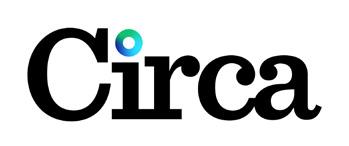
those who may have different needs and concerns than others. They also serve as a way to connect members to the larger community of the workplace as a whole and bridge the gap between cultural differences.
To put it into perspective, 91% of executive sponsors feel a sense of belonging at work, but only 76% of ERG leaders say the same. ERGs help build high-trust relationships that foster a sense of belonging and, in turn, help companies flourish. Some of the key benefits of ERG support include:
● Ensuring that employees have an opportunity to be heard, valued, and engaged
● Gaining a better understanding of who the company’s customers are
● Strengthening employee wellbeing and mental health
● Receiving insight on business performance, because smart companies understand that if they don’t grow, they won’t be around long
● Improving the organization’s leadership development process and ensuring alignment between business and diversity strategies
● Forging strong relationships to drive results
30
ARTICLE
STATE OF THE INDUSTRY RESEARCH


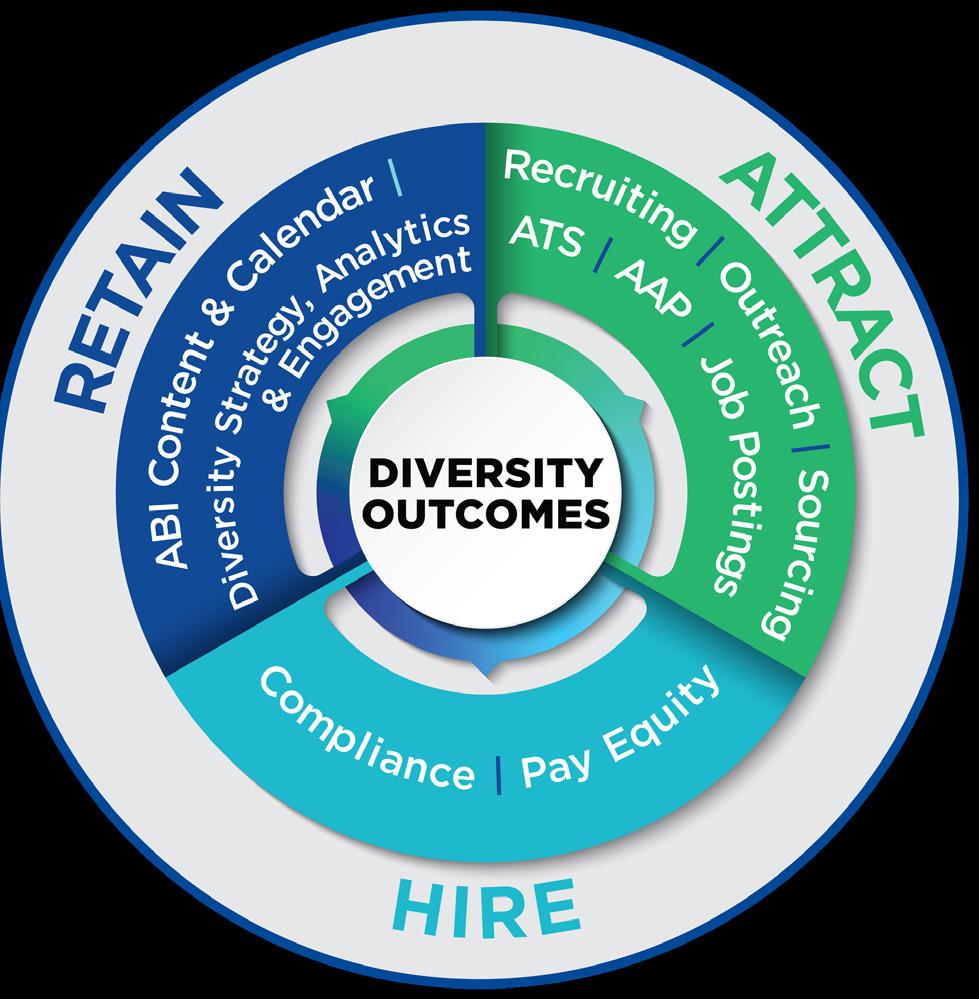
How to Get Started with ERGs
No matter how small your business is, you can still create ERGs. The first step in doing so is connecting with employees and gauging their interest. If employees feel that they could benefit from an ERG, it immediately holds value for your company.

The next step is to get executive buy-in. Without support from leadership, the substantial benefits of an ERG can fall flat. Many companies report that DEI initiatives are an extremely high priority, so it is important to demonstrate how ERGs are a critical extension of that goal.
With support and interest from both employees and leadership, you can then define your group’s mission. What is it that you aim to achieve through
an ERG (or multiple)? Members of an ERG should have clearly defined roles and responsibilities in order to serve as a strategic resource for the organization.

From there, you can recruit members and host a meeting. This is the golden building block in creating successful and strategic ERG initiatives — it is where you will lay the foundation for fostering a sense of belonging, supporting career advancement, and connecting your community.
The final step that cannot fall to the wayside is maintaining organizational support. While ERGs are employee-led, they still need organizational support. It’s important to define how the company will continue to advocate for each ERG, its initiatives, and its members. This often includes providing a sufficient budget to allow the groups to execute their goals. Another great way to continue to support ERGs is to periodically bringing multiple groups together to share ideas, be more inclusive, and get to know new people in different departments.
Katie Coleman is a Product Marketing Manager at Circa
32 ARTICLE STATE OF THE INDUSTRY RESEARCH
Would you like to comment?
How to Send an Outbound Recruiting Email
Kunwar Ishan Sharma, hireEZ
Don’t Hit Send (Just Yet)
Sending an email is easy.
A couple of sentences and the click of a button –your email is on its way.
Sending an email that actually gets a candidate response? Not as much.
In fact, hireEZ found that the single-email reply rate was around 9% in November of last year. With an even more uncertain talent market and hesitancy around switching jobs, improving that number may feel impossible.

So what do you need to do in your emails to get higher candidate responses? Taking a proactive approach to building candidate relationships with outbound recruiting.

“When we hire, there are a million variables we don’t control – including one of the most unpredictable variables in the world: humans.
There’s nothing we can control about their behavior, and we surely can’t force them to take a job.
The one thing you can control? How you message people.” - Kat Kibben, CEO of Three Ears Media

Let’s Change the Subject (Line)
Imagine your inbox at this very moment. It is likely packed with promotional emails, recruitment content, candidate replies (hopefully), and so much more.
The only time you stop scrolling is when a subject line catches your eye, right? It could be something you are interested in, something shocking, or even something that is completely unique from everything else.
With so many emails flooding candidate inboxes, you have to make yours stand out.
33
ARTICLE
STATE OF THE INDUSTRY RESEARCH
A few things to keep in mind:
keep it short (but make sense)
Think about what world-renowned accountant Kevin Malone once said. When it comes to words, “why waste time say lot word when few word do trick.”
You should take a semi-similar approach with your subject line. Try to make a little more sense than Kevin did but keep things as short as possible
Example: “[Name], why join our growing team?”
Personalize it (As much as you can)
Now, you only have a few words for your subject line so you won’t be able to personalize it immensely.
But, you can do things like include their name or reference a past project they worked on.
The more personal the better opportunity you give yourself to get your email opened.
Example: “[Name], can we chat about your last project?”
Pro Tip: hireEZ makes it easy to automate variables like name, company, job title and beyond to save yourself time for personalization in other areas.
Experimenting with the Body
By now, you’ve hopefully gotten candidates to click into your email.
But getting them to click is only the first step… getting them to read and even reply are higher hills to climb.
have a recognizable brand? shout it out!
If you work at a company with strong employer branding or some recognition in your industry, use that to your advantage.
If an individual recognizes your brand, they may be more likely to open your email for a specific opportunity.
Example: “[Name], Apple is looking for someone like you.”
Action Words
If you want to grab a candidate’s attention, action words are a good way to do it.
It gives you a chance to make a candidate feel included or build up excitement about what they might expect.
Examples: “Discover why our team has doubled in size”

“Ready to make an impact as a [title]?”
If you want a shot at successfully engaging a candidate, standing out is critical. However, standing out can mean so many things.
While we’re providing some guidelines to consider when building out your email, don’t stop there from experimenting.
34 ARTICLE STATE OF THE INDUSTRY RESEARCH
Guidelines
Allow Me to introduce Myself
There needs to be a fine balance between under and over-introducing yourself. Think about communicating the essential information that a candidate needs to know. Who are you and why are you emailing them?
As you tackle those questions, feel free to experiment with how you convey that information. A funny quip about yourself, an interesting fact about the team their recruiting for or even drawing attention to the fact that the candidate has probably read so many intros and might be burned out from it.
A/B Testing
Every person is different.
You’ll find people who:
● Prefer more detailed messages versus shorter ones
● Prefer a specific tone (humorous, professional, etc…) And beyond. The same approach won’t work with every person, so creating different emails and sending them out to different groups of candidates to see what works best for what group.
Personalization
Similar to the advice for subject lines, personalizing is key. Don’t just say “Hey, I saw your profile” or something like that because that’s obvious.
If you’re using hireEZ, we provide any associated websites, social profiles and beyond that contain tons of information on the candidate you’re engaging. Does your candidate have a personal photography website? Pick your favorite photo of theirs and ask them about it.
Did a software engineer you’re engaging with work on a personal project they posted on their GitHub profile? Mention it and relay how it would translate to their role at your organization.
The more you personalize, the more you show you care about the individual.
Nurture over Nature
In an analysis of over 100 users in 2021, those that sent sequence emails over single emails had a 66% higher reply rate.
Imagine if you could get two-thirds more of your candidates to respond just by building out a sequence.
I know what you might be thinking. Setting reminders about follow-ups and manually writing additional emails for people that may not respond seems like too much work.
hireEZ makes that easy by automating the tedious parts of that process, including when it is sent, how many are sent, and saving follow-up sequences for future outreach.

35 ARTICLE STATE OF THE INDUSTRY RESEARCH
Industry veteran and Global Talent Sourcing Trainer Vanessa Raath explains:
“With email automation that track open rates, reply rates, and sentiment stats, tracking candidate engagement is now easier and more accessible to everyone.

Here are some quick tricks to measuring your candidate’s engagement success:

● Measure how many candidates you email vs. how many respond
● How many of the responses were positive vs. how many candidates responded to say that they were not interested
● Which email received the highest response rate and determine why
● Ask your candidates what they thought of your Drip Marketing Campaign. What did they enjoy, and what do they think you could do better next time?
If you have an ATS, that is even better. You already have a pool of candidates that are ready to be reengaged for a potential opportunity. Even if they are not immediately ready for a position, sending them bi-yearly follow-ups or relevant content to their field can bolster a positive relationship for future roles.
Did it Work?
Strategies are great to read – but are you checking to see if they are actually working?
hireEZ makes it easy to see how your email campaigns are performing, including recipient numbers, opens, clicks and replies.
The result? You will have full visibility of your engagement process by building on what works and making improvements to what does not.
Kunwar Ishan Sharma is Content Team Lead in charge of content creation across hireEZ, including external articles, blogs, video scripts, and eBooks.
Would you like to comment?

36 ARTICLE STATE OF THE INDUSTRY RESEARCH


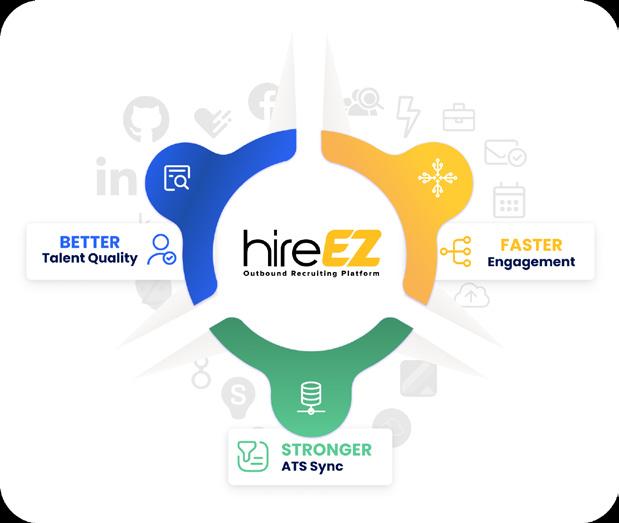

Digital Recruitment: 4 Best Practices to Achieve Success
Ashleigh Sabolcik, Globalization Partners
At G-P, our industry-leading Global Employment Platform™ helps companies unlock their full potential by building highly skilled global teams in days instead of months. But how does the everywhere workforce work together best? Here we discuss the opportunities – and challenges – in achieving the kind of global growth and success we can all share.
G-P. Global Made Possible.
The business world has well and truly embraced digital recruitment; the sourcing, hiring, and onboarding of talent through online platforms. As 2022 winds down and companies continue to source remote candidates from global locations –digital recruitment, also known as digital HR, has never been more vital to the sourcing of skilled tal-

38
ARTICLE
STATE OF THE INDUSTRY RESEARCH
ent and ensuring they have a pleasant hiring experience.
Because digital recruitment plays a key role in global hiring these days, it is beneficial for businesses to know and understand the various practices that can help make recruiting online easy and efficient. In the case of G-P, we utilize the latest technology with our #1 SaaS-based Global Employment Platform™ to bring together all the steps of the recruitment lifecycle, so companies and candidates encounter a comprehensive, consistent, and compliant hiring experience.
Human resource managers, recruiters, and hiring managers can all benefit from utilizing AI and other technologies when sourcing and hiring qualified candidates – and we have listed four key best practices to help companies in their digital recruitment journey.
1. AI — A hiring manager and recruiter’s best friend
The advantages of leaning into technology and using the latest AI tools to help with digital recruitment cannot be understated. Automating manual tasks while helping to streamline others during the recruitment stage is very helpful – especially if you are hiring for multiple roles at once, as it cuts down the time hiring managers spend on each application, writing interview notes, following up, and more.
The business world now has access to multiple platforms and tools that can help speed up recruitment processes. From utilizing employment platforms such as G-P´s Global Employment Platform™, which offers a full suite of services, to industryspecific channels like LinkedIn, and job boards like
Monster.com, and Indeed, companies can easily find the right technology to suit their needs.
One additional tip noted in G-P article, “4 International Recruiting Tips,” is to assess the tech experience levels of your teams and begin to implement the corresponding tools and platforms, which you can build on as time passes and employees become more comfortable with each tool.
2. A tailored digital recruitment strategy — Better for your needs and brand
Tailor your recruitment strategy to align with the needs and brand of your company. A strategy for hiring that fits your company´s requirements allows you to stand out and have an edge over competitors.
A solid digital recruitment strategy includes:
● Utilizing your social media channels to speak to your existing audience and potential candidates to help spread the word that you are looking for talented professionals – as candidates are likely looking for vacancies on social media. These audiences know your company´s story and already follow your progress, therefore have insight into what your business is about and what it stands for.
● Incorporating chatbots and personalized messaging as part of the online recruitment process. Using your company’s shared language, logos, and messaging can help reiterate what your company represents and how you present your company to candidates. It also helps retains consistency with messaging.
3. Digital assessments — Reduce candidate screening time
As noted in an article by LinkedIn this year, the process of screening applications for the best candidate can be time-consuming – but digital assessments can lighten this load.
Digital assessments are the use of AI to help recruiters sift through a mountain of applications in a fraction of the time. These assessments are used to review the characteristics, abilities, skills, and other attributes of candidates via a digital medium, so hiring managers don’t have to, saving time while you produce the list of candidates your company is looking for.
Some of the more popular tools include:
● Vervoe: AI-backed skills assessment tool
● Harver: Similar AI-based assessment tool that can assist with interviews and reference checks
● Pymetrics: Offers soft skills assessments by analyzing and extracting data
4. Maximized candidate experience

In the pursuit of achieving optimal efficiency in your recruitment process, it is important not to forget how your processes impact candidates — they will be the ones most affected by any new digital recruitment strategies you implement. It may help companies to think about how user-friendly certain tools are, the steps to complete an online application, where and how to use additional features such as chatbots, the aesthetic of any online platform you utilize or create, and so on.
As noted by Reoot Peleg, founder of HR for HR, in an interview for an article by Entrepreneur, “The candidate is a customer in every way. We need to
go after them with remarketing, blog posts, PR, and more in order to increase the intent and push for a close — just like how a marketer would go after a customer.”
There is no better way to showcase how efficient, intentional, and consistent your company is than during the online recruitment process.
Knowing current digital recruitment trends and practices, and prioritizing the candidate’s experience can help you have the edge over competitors and stay ahead of the digital recruitment curve –not to mention help your company source exactly the type of talent your business deserves.
Digital recruitment allows companies to tap into diverse pools of talent and not be limited to local talent pools, so it pays to have solid procedures in place to ensure your company can compete with similar businesses to entice and attract talent.
When it comes to managing your brand’s reputation, compliance, and that personal touch, G-P’s Global Employment Platform™, paves the way for your company to unlock opportunities. G-P offers a full suite of services to help you deliver high-caliber hiring and onboarding experiences your future employees will remember.
Click here to begin your global growth journey and unlock the power of global teams.
This article first appeared here
Would you like to comment?
Ashleigh Sabolcik is the Director of Talent Acquisition at Globalization Partners
G-P is your partner in global expansion.
It is our mission to break down barriers to global business, enabling opportunity for everyone, everywhere. Our comprehensive technology, backed with our world-class legal, HR, and tax experts, makes global expansion easy, every step of the way.

Create compliant employment contracts in minutes with our Employment Contract Generator.
Smoothly scale your global team by hiring in 180+ countries.
Pay employees and contractors in 150 currencies.
Sync information across systems and access clean data points to make better global expansion decisions.
We are the world’s leading Global Employment Platform™ that makes it fast and easy for employers to find, hire, onboard, pay, and manage global employees vwithout having to set up international branch offices or subsidiaries.
G-P: Global Made Possible
The everywhere workforce is within reach.
g-p.com
How to Measure and Improve Quality of Hire
Every company wants to hire the best and brightest employees for their teams. People who are driven, committed, and aligned with your company’s culture are often the best employees. But it’s notoriously difficult to measure whether or not your company’s hiring process and methods are actually effective and able to produce high-quality candidates. This is why quality of hire has become so important to talent acquisition (TA) teams in recent years.


What Is Quality of Hire?
In short, quality of hire is all about the value new hires provide to their team and company. TA teams and recruiters often lead the quality of hire charge, but it’s a big task to achieve that constantly evolves and adjusts. To successfully measure and improve your company’s quality of hire requires alignment with executives and leadership, their goals, and their expectations.
42
ARTICLE
STATE OF THE INDUSTRY RESEARCH
The good news: identifying and measuring quality of hire metrics is not impossible to achieve. Read on to find out the steps you can take to move the needle on your quality of hire.
How to Measure Quality of Hire
When it comes down to it, measuring quality of hire metrics is completely dependent on the organization and teams you work with. There are dozens upon dozens of potential metrics and touchpoints to look at pre-hire, post-hire, and during the recruiting process.
However, there are some consistent indicators across companies with high quality of hire that you can start with retention and performance.
New Hire Retention
Whether or not new hires stay at the company for extended periods of time is a solid indicator of successful quality of hire. The higher the retention rate is, the more likely it is that your company has a high quality of hire.
New Hire Performance
Performance reviews are super common for a reason. They’re a great way to measure employee effectiveness over the past quarter or year and see whether or not new hires were the right fit for the role.
Some other metrics or touchpoints you could consider—depending on your company and team needs—include:
● Measured employee output and/ or productivity
● New hire happiness
● Attrition
● Onboarding success
● Hiring manager satisfaction
● Offboarding surveys and exit interviews

● Any department-specific metrics around advanced, specialized skill sets
6 Ways to Improve Quality of Hire
Now that we know how to measure quality of hire, let’s dive into how to actually raise it. Here are six steps you can take to improve quality of hire:
1. Make the relationship between talent acquisition and the rest of the company a true partnership. The role you play in your company can be transactional, or it can be more of a team effort and true partnership where talent acquisition leads the way. Companies with high quality of hire focus on educating and empowering everyone involved in the hiring process and constantly communicating feedback and sharing ideas for improvement. This partnership makes it easier for department leaders and executives to openly share what’s important to them when it comes to new hires.
2. Invest in interview training. Interviewing candidates is a very, very small part of any hiring manager or interviewer’s job. Because of this, they don’t always have a lot of experience in the interviewer’s seat and might not be able to properly judge great candidates from the bad ones.
By providing interview training and coaching, you can help hiring managers and interviewers understand how to run consistent interviews, identify key competencies, pick up on candidate signals, and reduce the impact of bias
3. Bring others along for the journey. When hiring managers and teammates ask about a part of the hiring process, it’s easy to default to “Because that’s the process,” or “That’s the way it’s always
been done.” However, those are knee-jerk, defensive reactions that isolate others.
Instead, deepen your partnership by taking the opportunity to educate those involved in the hiring process on why it is the way it is, what you’ve learned from it, and mention that you’re always happy to accept ideas or feedback. The best hiring decisions are made when you bring others along on the hiring journey.
4. Maintain consistency and alignment. The best talent acquisition teams know that consistency leads to the best results. Ensure there’s consistency and maintain alignment by:
● Ensuring your interview process is structured and consistent, so you can give every candidate the same experience every time.
● Checking in with new hires often, especially during their first 90 days, and asking them if the role matches what they were told during the interview process.
● Staying in touch with department heads and executives so you know if and when team priorities shift, and can adjust your strategies as needed.
● Maintaining open communication and asking for feedback from everyone involved in the hiring process.
5. Add an interview intelligence platform to your recruiting tech stack. Without visibility into your interviews, it’s nearly impossible to address any issues that impact your quality of hire. With an interview intelligence platform like BrightHire, you can record and transcribe every interview and
access an abundance of valuable interview data and insights that transform how you hire.
Not only does having full visibility into your interviews help you improve your hiring process. It also allows you to review successful new hire performance down the road and tie that experience back to their interviews to look for consistency— and incorporate your findings into future interviews to continue raising the quality of hire.
6. Don’t try to do everything at once. Making a difference requires small, slow changes. If you change everything about your hiring process in one swoop, it’s impossible to know what works and what doesn’t—and that much change at once can cause many people to feel paralyzed and overwhelmed, especially if there was no focus on change management. Start small, focusing on one improvement at a time.
Make Better Quality of Hire a Reality
Ready to move the needle on your quality of hire? Good news: BrightHire is the fastest way to improve the quality of hiring. BrightHire captures and analyzes interviews, and surfaces new insights that improve decision making, foster collaboration, and bring real context into the hiring process.
To learn more about BrightHire and how it can help you transform your quality of hire, visit: www. brighthire.com
Would you like to comment?






Sponsor any of this year’s state of the industry research topics and come away with your very own affordable and branded research report and infographic, establish yourself as an industry thought leader by presenting at a one-day Virtual Event, and bolster sales through the generation of qualified leads.
Hottest Trends in Benefits
Virtual Event
See list of hot industry research topics below and give us a call to get started.

New Ideas and Tools for Effective Performance Management Virtual Event
Jan 31, 2023
Learn more at: hr.com/Performance ManagementVirtualEvent
The State of Contingent Work
Feb 7, 2023
Learn more at: hr.com/contingent workresearch
Jan 25, 2023
Learn more at: hr.com/BenefitTrends VirtualEvent
The State of Human Experience in the Workplace
Feb 15-16, 2023
Learn more at: hr.com/ HumanExperienceResearch
The Future of Upskilling and Employee Learning
Feb 22, 2023
Learn more at: hr.com/ upskilling
The Future of Workplace Trends
Feb 8, 2023
Learn more at: https://hr.com/ workplacetrends
Solving for Today’s Workforce Shortages
Virtual Event
Feb 23, 2023
Learn more at: hr.com/workforce shortagevirtualevent
Align your brand with this year’s State of the Industry hot HR
and showcase your
topics
expertise
A State of the Industry Research & Virtual Event Sponsorship Opportunity Contact us today to get started at sales@hr.com | 1.877.472.6648 | hr.com/industryresearch

The Future of Recruitment Technologies 2023 Talent Acquisition Excellence December 2022 For more information: 1.877.472.6648 sales@hr.com www.HR.com/epubs The HR Research Institute tracks human resources trends and best practices. Learn more at hr.com/featuredresearch

Talent Acquisition Excellence presented by HR.com November 2022 48 Submit Your Articles ePublication editorialcalendar2022 Checkoutthenewandupcomingthemed HRtopicsinTalentAcquisitionExcellence Check ePublications Editorial Calendar Here. Would you like to submit an article? | Write to us at ePubEditors@hr.com Submission Guidelines 1 The Emerging Workforce Jul 2022 2 Pre-Hire Compliance Aug 2022 3 Sourcing Sep 2022 4 Third-Party Recruiting & Outsourcing Oct 2022 5 Careers in Talent Acquisition Nov 2022 6 Future of Talent Technology Dec 2022
inside The Automated Future of recruiting Technology
Automation is driving the future of talent recruitment through
Ml and Ai
By Alex Fourlis, Broadbean
The labor market is in flux: despite a talent shortage, job vacancies continue to increase.
With the effects of the pandemic still present, we are living in an era of uncertainty. However, one thing that remains certain is that technology will continue to be a crucial driver for talent recruitment.
For HR professionals and corporate and agency recruiters, especially, the labor market problems of today are paving the way they approach talent acquisition in the future, which will make choosing the right technology the key to successful talent recruitment.
As talent technology platforms become increasingly available, understanding the capabilities of these technologies is essential to increasing efficiencies and saving industry professionals time and money.
Matchmaker, Matchmaker: how Better Matches lead to higher quality hires
Automation is driving the future of talent recruitment through machine learning and AI software.
Streamlined talent technology allows recruiters to automate previously manual tasks, improving efficiency and optimizing the hiring process.
This increase in efficiency is clear in early candidate ranking stages by enabling recruiters to sift through hundreds of applications more quickly. With a limited talent pool, intelligent software gives recruiters the upper hand against the competition.
Applicant ranking technology uses machine learning to rank candidates best suited for the position for which they applied. By selecting candidate filters, recruiters can identify skills and requirements that best match their criteria, helping to narrow down top candidates more effectively and saving overall time to hire.
Another area we will see a rise in automated technology being utilized is job distribution. Talent software can enable talent recruiters to post job positions on job boards, and search engines simultaneously, and on social media channels. Recruiters can then access candidate responses and real-time updates in a single software platform, streamlining communication into one location.
By accessing performance data, recruiters can focus their efforts on higher-performing job sources, increasing productivity.
Automated talent technology redefines how corporate and agency recruiters and HR professionals source
Talent Acquisition Excellence presented by HR.com December 2022 49 Submit Your Articles
Top Pick
and find quality talent. Understanding the benefits of implementing automated recruitment software is vital to hiring top talent and staying ahead of competitors, now and in the future.
collect analytics into a single database for recruiters to see real-time updates on applications, candidate responses, and more.
Talent intelligence:
Why We
should count on controlling our
Data
Data is crucial to making business decisions and increasing performance, yet 46% of recruiters expressed they do not have enough data to make smarter decisions. Talent technology tracks and organizes real-time data into a central database, helping recruiters develop critical insights and make better-informed business decisions. Data-driven recruitment is on the rise and has the power to transform talent recruitment globally.
For recruiting professionals, understanding the labor market and assessing the budget are vital to hiring quality talent and ensuring cost efficiency in the process. With the right talent technology, recruiters can access real-time market updates, including job vacancies and application volumes, making betterinformed recruiting decisions. Additionally, recruiters can better understand market competitiveness by accessing data on top professions, companies hiring, and vacancies per industry.
Understanding market and job performance data are pivotal to recruiting decisions, but it is essential recruiters do not lose sight of their biggest asset –their data. Machine learning and AI can track and

For example, determining which sources yield produces the best outcomes helps recruiters focus their efforts on a specific job source. While recruiters traditionally rely on candidates to self-report where they found a job position, using machine learning to track this data in a single database increases accuracy.
Taking control of the data talent technology can provide will help recruiters reshape talent recruitment into a data-driven industry.
Programmatic Advertising: Moving from Post and Pray to Perfect Precision
In a competitive talent market, programmatic recruitment solutions can help increase efficiency and reduce the time investment per hire.
Automated talent software provides programmatic solutions, and one area we will see a rise in AI machine learning in talent recruitment is programmatic advertising. When talent technology utilizes data and algorithms to determine the best placement for recruitment ads, programmatic advertising is created.
With the right talent technology, programmatic advertising can accurately track real-time data and
Talent Acquisition Excellence presented by HR.com December 2022 50 Submit Your Articles
Inside The Automated Future Of Recruiting Technology
ad metrics, allowing recruiters to allocate a budget toward certain job ads versus others. Programmatic advertising lowers advertising costs and time per hire by reducing a recruiter’s time spent advertising on multiple outlets and compiling performance data.
As talent technology evolves and updates, solutions that provide greater programmatic solutions will be vital for optimizing talent recruitment.
The increasing role of Dei in recruiting Technology
Creating a diversified workforce will impact the success of companies across the globe. With talent technology increasing and adapting, it is essential to understand how talent AI and machine learning software can help recruiters create a more diversified workforce for their clients.
Expanding recruitment technology can create an interconnected, online community that can allow recruiters to communicate with organizations and recruiters alike. Creating an online community that can interact effectively will enable recruiters to share a company’s diversity goals and expand the reach to recruit diversified candidates.
With an extensive amount of diversity-focused job sites, posting open positions in multiple places can become time-consuming. The aforementioned job
distribution methods enable recruiters to post on various diverse workforce sites simultaneously. By accessing real-time data on diverse job source performance, recruiters can increase efficiency by understanding the best ways to reach a more diversified workforce.

Talent technology’s future will help optimize how recruiters and HR professionals help companies create a more diversified workforce.
Automated recruitment is here to stay. Implementing talent technology is not a matter of if, but when recruiters and HR professionals understand the potential of machine learning and AI for optimizing hiring practices. Stay ahead of talent trends and ensure quality talent is engaged more proficiently and cost-effectively with recruiting software.
Alex Fourlis is the President at Broadbean. Alex brings 20+ years of experience in online job boards and recruitment advertising technology.
Would you like to comment?

Talent Acquisition Excellence presented by HR.com December 2022 51 Submit Your Articles
Inside The Automated Future Of Recruiting Technology
Talent Acquisition Epublication



Best-in-class education for all your learning and training needs

HR.com prepares HR leaders to be strategic business leaders by curating and delivering best-in-class products and services so you don’t have to waste time seeking out content on your own. We leverage technology and experience to provide you with customized solutions to best meet your professional development needs at every stage of your career.
From on-demand to cohort-based offerings, below is a listing of virtual courses that will challenge and empower you by giving you the tools to drive innovation and success in your organization.
The Candidate Experience Certificate of Learning
This program focuses on recruiting and hiring and the candidate experience. This comprehensive program is based on 10 years of recruiting and hiring benchmark research.
Becoming an Employer Brand Practitioner


Optimize and leverage your brand to attract the right talent! Learn how to understand and present the whole picture of your employer brand with this on demand course.
Employee Selection
Introductory-level course: learn about the process of selecting the best candidate from a large, diverse pool of high-quality applicants.
Introduction to Human Resource Management Human Resource Management Course includes understanding the vital tasks of recruiting, screening, interviewing, training, appraising, disciplining, rewarding, and developing the employee—both for business and non-profit enterprises.
Gain access to more expert-led courses.
Would you like to comment?
At HR.com, we are committed to educating and inspiring HR professionals and helping them build meaningful and impactful careers. With products and resources rooted in education, research, and leveraging cutting-edge technology, we help at every career stage - and over 1.92 million HR pros agree! (How could that many people be wrong?) By delivering best-in-class learning products, 250+ annual webcasts and 30+ world-class events, and innovative and thought-provoking research through the HR Research Institute, HR.com strives to inspire and strengthen workforces to change the world. HR.com also offers the most comprehensive HR certification exam preparation and guarantees a passing score on all SHRM and HRCI certification exams. Technology and experience drive our customized solutions that will help you become the best and most successful version of yourself.
Talent Acquisition Excellence presented by HR.com November 2022 52 Submit Your Articles
got Talent? how 3 high Performing recruiters Found A second career in TA
By Jennifer Allen Newton, Bluehouse Consulting Group, Inc
I’m not a recruiter, but I’ve had the good fortune to work with a few talent acquisition professionals over the years. As they shared with me their personal career stories, it struck me how common it is for recruiters to come into the profession as a 2nd or 3rd career.
Many of them came from areas of business that are totally outside the human resources function – like marketing, sales or accounting – and were drawn to recruiting through serendipity or by seeking to expand their own careers in new and interesting ways.
I wondered, why so many successful recruiters come from completely different career areas. Is there something about having work experiences in other domains that helps people become top recruiters?
And what transferrable skills did they bring to the job that have helped them be so successful?
how i got into recruiting: 3 Top TA leaders Tell All I sat down with three top talent acquisition professionals who made the switch from completely different

careers to ask three questions - which comprise the three parts of this story. The questions I asked were pretty straightforward and simple:
1) How did you fall into recruiting?
2) What capabilities are most important for someone considering a career in talent acquisition?
3) Do you have any more advice for would-be recruiters?
Talent Acquisition Excellence presented by HR.com December 2022 53 Submit Your Articles
3 talent acquisition leaders, who came from other fields, share how they became recruiters - Part II
I spoke with:
Brenan German, Founder and President of Bright Talent
Rachelle Snook, Global Talent Director for WD-40 Company, and Paul Gonzales, Director of Talent Acquisition for Orora


Brenan German (Founder and President, Bright Talent)
First, I’d say to make sure you have a facility for communication and that you enjoy working with people. Regardless of your college major, those are skills you will absolutely need as a recruiter.
Understand how businesses work. It’s tempting to think of recruiting as solely a people-focused job, but just being good with people isn’t enough. You also have to understand how businesses operate in order to be successful. If you don’t have a business background, it helps to take accounting and business classes, even if you’re already out of school.
As a recruiter, the work you do is tied to the company’s bottom line, and you need to understand how, so that you can ask the right questions, give the right advice to your hiring managers and find the right candidates.
You also have to be a continuous learner. The world of recruiting, like the world of business in general, is constantly changing. As soon as you think you have it figured out, it’s time to recognize that you’re wrong. That kind of thinking will stymie your own growth.
Stay curious and learn everything you can about what makes people tick. Evolve with the technology – learn the latest tools so you have a leg up.
Rachelle Snook - Global Talent Director, The WD 40 Company: People can come into recruiting in so many different ways, but I think there are a few skills and attributes that really help. I mentioned curiosity and problem-solving before.
Recruiting is largely about problem-solving – you have to understand the business, company culture, the problem the role will be tasked to solve as well as the minimum requirements for the role.
It really helps if you are a naturally curious person because you will enjoy the information-gathering process and the challenge of identifying the puzzle pieces and finding ways to piece them all together.
And, a common myth about recruiters is that they are all extroverted networking gurus – lots of introverts are very curious and great at asking questions to seek clarification, relationship-building, and problem-solving.
You also have to have skills of persuasion, negotiation, and the ability to overcome objections. Basically, recruiters are in sales – you’re selling the job to a potential candidate and you’re selling the candidate to the hiring manager. That’s why so many salespeople move into recruiting as their next career. You have to know where to look, to uncover rocks where talent exists in order to find the right candidate.
You also need to understand what it is the candidate is looking for. When you find a great candidate with the right capabilities, sometimes you have to work with them to explore why the opportunity is a great opportunity for them and how it checks all, or most, of their predefined requirements. In a way, it’s much like finding a new home – it’s unlikely you’ll find the perfect home, and there will always be tradeoffs and opportunities.
Persuasion also comes into play on the hiring side. Often, you have to overcome hiring manager bias, convince a hiring manager into considering a candidate you believe could do a great job in the role but who may not meet their vision of the “perfect” candidate, or you may need to broker alignment internally on candidate evaluations – it’s a juggling act.
This is why understanding the role and the business needs are so critical – rather than allowing a role to remain vacant awaiting unattainable perfection in a candidate, you may find yourself in a position to make a case for why developing someone into the role has long-term value or how a particular candidate meets the essential minimum requirements, even if they don’t tick all the “ideal” boxes.
Talent Acquisition Excellence presented by HR.com December 2022 54 Submit Your Articles
Talent? How 3 High Performing Recruiters Found A Second Career In TA
Got
Paul Gonzales, Director of TA, Ororo

I think you need to have a deepdown interest in people. It helps if you’re the kind of person who never gets bored picking up the phone and talking to people. It doesn’t really matter if you’re an introvert or extrovert – I’m more introverted than extrovert and I’ve been very successful at recruiting. It’s more a matter of having the social skills that help you be successful in the area of recruiting you to want to pursue.
For example, some people are perfect as recruiters for IT and other technical professions, while others are great at recruiting for sales, marketing or senior leadership positions. Basically, you need the kind of people skills that allow you to be a good matchmaker between the person seeking the job and the organization you are recruiting for.

You also need to have strong business acumen and intellectual curiosity, because you have to learn all the different nuances of the company you work for and be able to connect the dots. You need to understand the needs of different departments you’re going to hire for and understand what they do.
One of the reasons I, and most people I know in recruiting, love our jobs is that we get to wear a lot of hats Sometimes you’re acting like sales and marketing in the way you market and advertise positions – you need to think about what a candidate would want to see in a job description or what they’d want to learn about at a career fair that would entice them to work for the company. You’re also a bit of a psychologist, particularly when you’re assessing a person’s skills for a particular job.
You need to know the culture and needs of your organization and be able to critically evaluate someone’s skillset, personality fit, and how compatible they will be with the culture of the organization. Fortunately, our industry has a lot of new technology and increasingly wonderful tools to make our jobs easier and more effective. While having our own gut feelings comes into play, these assessment tools really help us make the determination if someone is right for the job and the company.
You also need to be able to ask good questions Behavioral interviewing is a great tool. The premise is that basic human nature doesn’t change – a person’s past behavior indicates future behavior. So if a person succeeded in a similar role in the past, they’re likely to succeed in a similar role in the future. Asking the right questions helps you determine if a person has the right aptitudes and alignment with the values of the company culture that will help them be successful in a role.
Great consulting and analytical skills are important. Throughout the entire hiring process, you act as a consultant, advising on what to expect and what to do. You are the subject matter expert in recruiting, so you consult with hiring managers about things like the labor market, and you provide advice on the salary range they can potentially offer for a job.
And when there’s a tight labor market, as we’re seeing today, you may have to advise leaders that if they can’t find the specific talent they’re looking for, their best bet is to “hire for aptitude and train for skill.”
That is, we look at if the candidate has the aptitude and complementary skills that will enable them to learn the skills or software or get the certifications they need so they can be an asset who will grow within that position and the organization.It also comes down to being a good mediator and negotiator. You’re the go-between – between the hiring manager and the candidate. You have to have the ability to see, understand and work on behalf of both sides to successfully mediate the negotiation. This is key to being able to advise and direct toward a successful engagement for a hire.
Would you like to comment?
Talent Acquisition Excellence presented by HR.com December 2022 55 Submit Your Articles
Jennifer Allen Newton, President of Bluehouse Consulting Group, Inc., is a coach, consultant and writer for individuals and companies in a variety of industries.
Talent? How 3 High Performing Recruiters Found A Second Career In TA
Got
HRCI® & SHRM® CERTIFICATION PREP COURSES
GROUP RATES AVAILABLE
For HR Professionals
Show that management values the importance of the HR function, and has a commitment to development and improvement of HR staff.
Ensure that each person in your HR department has a standard and consistent understanding of policies, procedures, and regulations.
Place your HR team in a certification program as a rewarding team building achievement.
For Your Organization
Certified HR professionals help companies avoid risk by understanding compliance, laws, and regulations to properly manage your workforce.
HR Professionals lead employee engagement and development programs saving the company money through lower turnover and greater productivity and engagement.
A skilled HR professional can track important KPIs for the organization to make a major impact on strategic decisions and objectives, including: succession planning, staffing, and forecasting.
HR.com/prepcourse CALL TODAY TO FIND OUT MORE 1.877.472.6648 ext. 3 | sales@hr.com

1 Less expensive than a masters or PhD program, and very
with 2. legislation and best practices 3. Recognized, Industry benchmark,
HR Professionals We offer
rates
For
All
CALL TODAY TO FIND OUT MORE 1.877.472.6648 ext. 3 | sales@hr.com | HR.com/prepcourse Group Rate Options 1 2 3
manageable to prepare
held by 500,000+
group
for teams of 5+ or more for our regularly scheduled PHR/SPHR/ SHRM or aPHR courses.
groups of 12+, we can design a more customized experience that meets your overall length of the course. Groups rates for HRCI exams are also available as an add-on.
group purchases come with 1 year of HR Prime membership for each attendee to gain the tools and updates needed to stay informed and compliant
2023 hr Technology Predictions: A Tricky year For soothsaying
3 trends that will shape the future
By Hari Kolam, Findem
Foretelling HR technology trends is a formidable undertaking in any year, but doing so as mass layoffs rip across the tech industry, new HR tech regulations are implemented, and consolidation continues among HR tech vendors makes it even more of a tightrope act. That said, I offer my take on three trends I expect to unfold in this space in 2023 and shape the future of HR technology as we know it today.
1. network-building supplants outbound recruiting Amid slowdown
Hiring may be stalled in technology and adjacent industries, but that does not mean talent acquisition teams will be idly sitting by and ignoring their talent pipelines until that changes. Quite the contrary. To set themselves up for ongoing hiring needs, teams will take advantage of the slowdown and focus on cultivating their networks. This network-building will enable them to place less of an emphasis on outbound recruiting and ensure they are wellpositioned with a warm bench of quality talent when hiring heats up again.
Candidate nurturing will continue to grow in importance in 2023, but will just be one piece of a broader strategy that also involves building a talent community, rediscovering and re-engaging with prior applicants, developing a trusted alumni network and creating new pathways for internal mobility. Today’s
of
hr tech
talent teams have to accomplish more with less, and shifting their focus from pure outbound recruiting to a more holistic approach will help them plant the seeds and build the candidate relationships that lead to more fruitful hires.
2. using Tech to Target superstar Talent laid off by competitors
A confluence of factors in recent months sparked a wave of layoffs. For employers still in hiring mode, this presents a silver-lining opportunity to recruit and source employees re-entering the talent pool. Many of these laid-off employees come from fields such as crypto, AI and the metaverse that were on the bleeding edge and managed to snag really good people early on who are now suddenly available.
Forward-thinking companies will tap into newer technologies and strategies in the coming year to find and recruit these cream-of-the-crop candidates before they land elsewhere or boomerang back to their previous employers. Technology will play a role in helping talent teams find laid-off employees and go a step further to suss out who was let go because of economic conditions rather than subpar performance.
We have seen a surging interest first-hand after adding a function to our platform where talent teams can search for candidates from companies that underwent layoffs. In Q4 2022, the use of this new
Talent Acquisition Excellence presented by HR.com December 2022 58 Submit Your Articles
Top Pick
feature skyrocketed, especially among tech recruiters and sourcers. Talent leaders will also increasingly scour public lists of laid-off employees – such as those published on Layoffs.fyi – to find standouts who meet the requirements of their job openings. This will be an especially fruitful strategy for those looking to hire for hard-to-fill and niche positions.
3. hr leaders and Tech Vendors collaborate to Address Ai Bias in hiring legislation
Hiring bias has been a looming issue that HR leaders and tech vendors alike have been trying to bust for many years, and it’s come to the forefront as companies strive to diversify their workforces and turn to technology for a helping hand. While an AI-driven approach has proven to help enable diverse recruiting while mitigating bias, the way it’s being applied in many instances could be creating more harm than good – namely, by HR tech building blackbox systems that learn from information and make decisions autonomously.
2023 will be the year when the government steps into the fray to ensure AI and automation are not introducing or perpetuating hiring bias. In April 2023, a New York City law goes into effect requiring companies to conduct independent audits of their automated hiring systems – and New York may just be the tip of the iceberg. We’ve also seen a Blueprint for AI Bill of Rights recently introduced by the White
House, although it’s presented as a set of guidelines for now.
For HR leaders, this legislation will mean shifting from technology making decisions to technology-enabled, decision-making. Accountability for wrong decisions will no longer be delegated to algorithms and instead fall to the people behind them. The bar will also be raised for technology providers who will need to be more transparent as to how their products are being built. We’ll also see them moving to a more “explainable AI” model where AI predictions can explain their decisions. This mode allows for a continuous audit done in a closed loop.
While there are surely a multitude of ways that HR practitioners will use HR technology to adapt to changing market dynamics in 2023, these three trends will undoubtedly make a mark on the recruitment and hiring landscape.


Talent Acquisition Excellence presented by HR.com December 2022 59 Submit Your Articles
HR Technology Predictions: A Tricky Year For Soothsaying
2023
Hari Kolam is Co-Founder and CEO of Findem
Would you like to comment?
5 Ways leaders can Attract And retain employees in 2023
By Alina Vandenberghe, Chili Piper
Aswe wrap the year, business leaders are strategizing for 2023 to best determine how to continue growing their company and supporting employees. Amid economic uncertainty, leaders need to not only think about growth, but also about ways to improve employee retention, whether it be providing unique benefits or boosting corporate social responsibility (CSR) efforts,
With that in mind, here are 5 workplace and HR trends to expect in 2023.
1. social good Will Take the spotlight
It has been argued that companies that prioritize social good and embrace a corporate social responsibility (CSR) campaign can see benefits to their business as the market will perceive the business is made up of conscientious citizens. In turn, this can lead to better business practices and more potential prospects as working with a company prioritizing social good can bring a positive public outlook and inspire employees to be part of these CSR efforts.
Next year, I expect to see more companies take public stances on global issues, drive social capital toward aiding significant causes, and use these campaigns to galvanize existing talent while engaging
new candidates globally. These efforts are good for the world and businesses, and humanize a brand, making it a more attractive workplace for younger generations.
2. remote Work Will continue to reign
Being fully remote since 2016, we have been used to the great benefits that the rest of the corporate world did not experience until 2020. Not only does it give employees a more flexible way to work, but invites cultures from around the world to contribute to a business’ success. Working remotely with large teams is actually more productive and many businesses will drive resources toward a remote infrastructure. With so many companies still trying to force their employees back to the office, we will continue seeing talented workers shifting their positions to companies that let them balance work and life in the truest sense of the phrase.
3. career Plans and coaching
As part of the employee journey, businesses need to stop playing the guessing game and give their workers a clear plan for how they can move their career forward. We are going to see more companies designate leadership as dedicated coaches to help employees reach the next promotion and advance career trajectories. Through clear goals, expectations,
Talent Acquisition Excellence presented by HR.com December 2022 60 Submit Your Articles
creating an attractive culture for existing and new employees
and support from peers, a career plan will empower an employee to grow in their own right and know exactly what is expected of them to grow professionally. Especially with layoffs plaguing the tech industry at large recently, smaller companies offering this benefit can find it helpful to attract new candidates when suddenly tens of thousands of talented, unemployed workers are quickly looking for a new job.
4. Building People Departments
So many companies will likely look outside the organization to fill a new position, but I expect more to build out people departments that better identify employees that can take on these new roles internally. By combining different aspects of talent, operations, and employee experience, backed by a robust recruitment tech stack, it can be simple to identify those that are best suited to take on new roles or higher-level work. More companies will prioritize this focus in the coming year as it is a great way to keep employees engaged with their overall career, and it can act as a benchmark for others to know growth is easily achievable.
5. separate learning and Development
Learning and development are often interchangeable, but come 2023, businesses need to shift this status quo. There is the old school “HR” mindset, which is humans are a resource that you can manage just like any other resource in the company, but this is
not the case anymore. Learning needs to be treated in association with a specific role and be part of employee experience while development is about growing an employee on a human level, living under talent development.
That distinction is important because when employees are underperforming in their roles at companies that treat humans like resources, it becomes about the person not being good enough. Come next year, companies need to put more focus on aligning someone with the right role and bringing the human element back to the spotlight.
As we enter 2023, businesses across all industries will continue facing economic challenges. However, these challenges can give leaders an opportunity to refine how they interact and support their staff, creating an attractive culture for existing and new employees.
 Vandenberghe is the Co-CEO/ Co-Founder of Chili Piper
Vandenberghe is the Co-CEO/ Co-Founder of Chili Piper
Would you like to comment?

Talent Acquisition Excellence presented by HR.com December 2022 61 Submit Your Articles
Alina
5 Ways Leaders Can Attract And Retain Employees In 2023
Thank you for partnering with us!
Circa provides OFCCP compliance management and recruiting technology solutions to deliver qualified candidates on a level, equitable playing field for organizations.


SkillSurvey’s talent intelligence platform provides actionable insights and optimizes talent decisions with feedback across the entire employee lifecycle.
Art of Mentoring combines evidence-based mentoring expertise with the latest technological innovations to enable organisations to develop impactful, cost-effective mentoring programs.

THANK YOU
Harrison Assessments uses predictive analytics to help organizations hire, develop, lead and engage talent.

At Jobvite, our mission is to empower organizations to hire and retain the talent they need to succeed. Our goal is to deliver the world’s most innovative and essential talent acquisition solutions.
 LEARN MORE
LEARN MORE
LEARN MORE
LEARN MORE
LEARN MORE
LEARN MORE
LEARN MORE
LEARN MORE
LEARN MORE
LEARN MORE
pymetrics is a talent matching platform leveraging soft skills data & ethical AI to accurately and fairly match talent to jobs at scale.


Sterling, a leading provider of background and identity services, helps 47k+ global clients create people-first cultures and hire with confidence.
hireEZ (formerly Hiretual) is an AI-powered outbound recruitment platform. With hireEZ, you can execute a strategically scalable approach to build your workforce of the future.

A DVERTISE WITH U S
LEARN MORE
LEARN MORE
LEARN MORE
February 15-16, 2023
January
January
January
Workplace
The State of Human Experience in the
regisTer
Ideas and Tools for Effective Performance Management
New
regisTer
January 31, 2023
People Strategy for the #FutureOfWork
regisTer
the Science and the
of Hybrid Workplaces
January 19, 2023
The Art,
Practice
ET regisTer
Employee Retention? Deliver the Career Progression Opportunities Employees Want
19, 2023 11:00 AM - 11:35 AM
The Secret Sauce for
ET regisTer
Minimum Wage Rates and
They May Impact Your Business
January 17, 2023 11:00 AM - 12:00 PM
Rising
How
ET regisTer VirTuAl eVenTs & hr.coM WeBcAsTs uPcoMing
www.hr.com/virtualconferences
our Upcoming Webcasts Schedule and Register Today! W e B c A s T s
January 24, 2023 11:00 AM - 12:00 PM
www.hr.com/upcoming_webcasts
View
The Future of Payroll: New research reveals the journey ahead
ET regisTer
Environment
11, 2023 2:00 PM - 3:00 PM
Shifting from Boss to Coach in a Hybrid
regisTer W e B c A s T s V ir T u A l e V en T s
our Upcoming Virtual Conference Schedule and Register Today!
10, 2023 3:00 PM - 4:00 PM ET
View

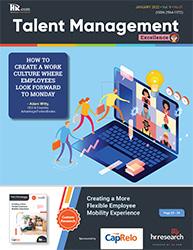
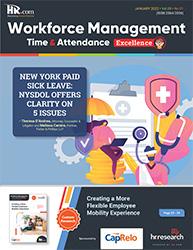




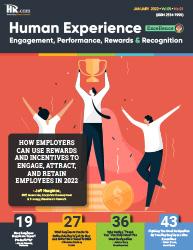





Like to submit an article? Use our online submission form or for more information go to www.hr.com/ExcellencePublications Publications 13 Targeted Publications to reach your Audience Informing, Educating, Enlightening and Assisting HR professionals in their personal and professional development, the Excellence series offers high-quality content through the publications!


For more information: Phone: 1.877.472.6648 | Email: ePubeditors@hr.com | www.HR.com/epubs Talent Acquisition Excellence December 2022









 Editor-in-Chief,
Editor-in-Chief,




 By Kevin W. Grossman, Talent Board
By Kevin W. Grossman, Talent Board




 By Mike Tannian, NEOGOV
By Mike Tannian, NEOGOV





 By Paul Lewis, Adzuna
By Paul Lewis, Adzuna


















































 Vandenberghe is the Co-CEO/ Co-Founder of Chili Piper
Vandenberghe is the Co-CEO/ Co-Founder of Chili Piper





 LEARN MORE
LEARN MORE
LEARN MORE
LEARN MORE
LEARN MORE
LEARN MORE
LEARN MORE
LEARN MORE
LEARN MORE
LEARN MORE















